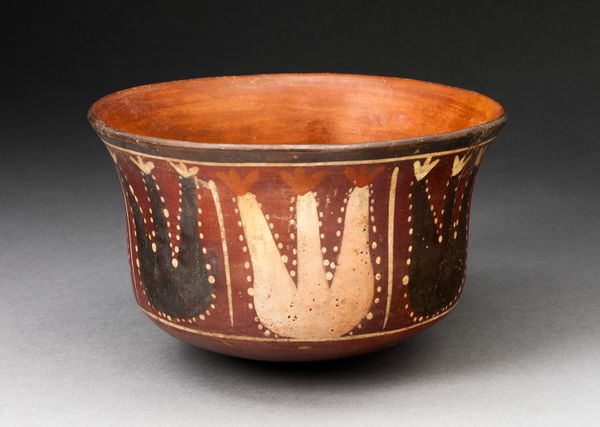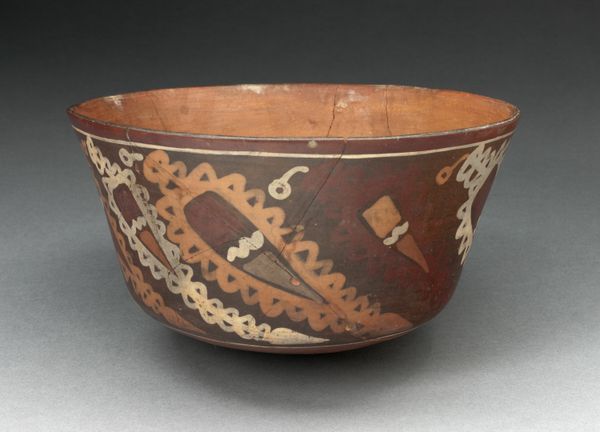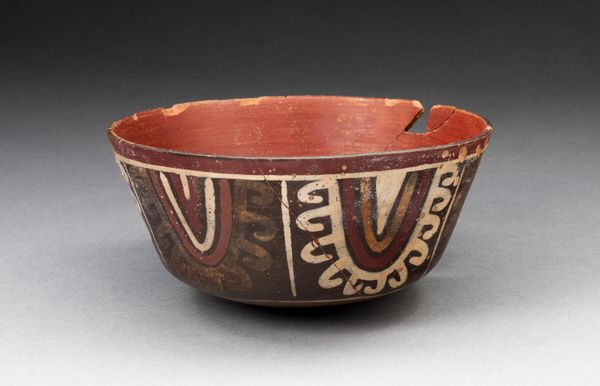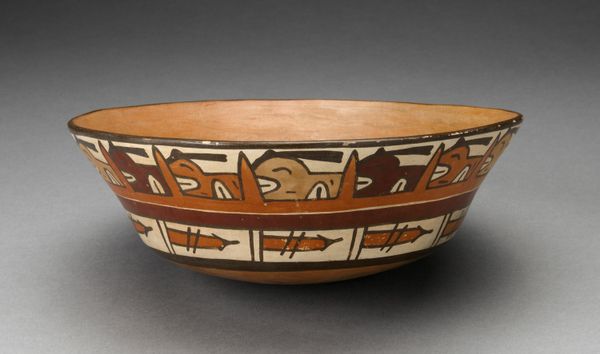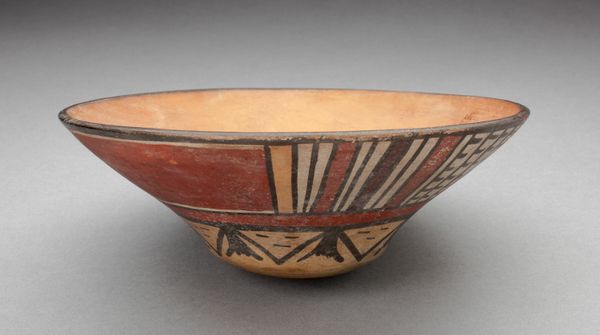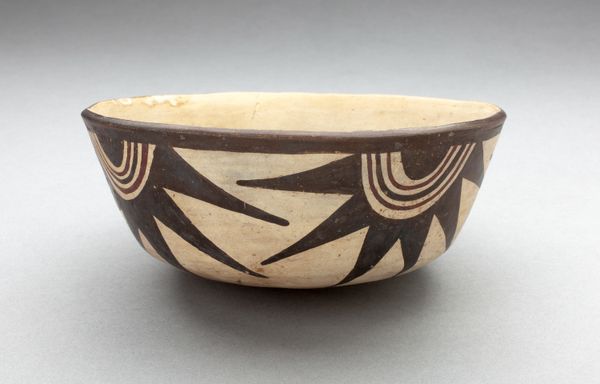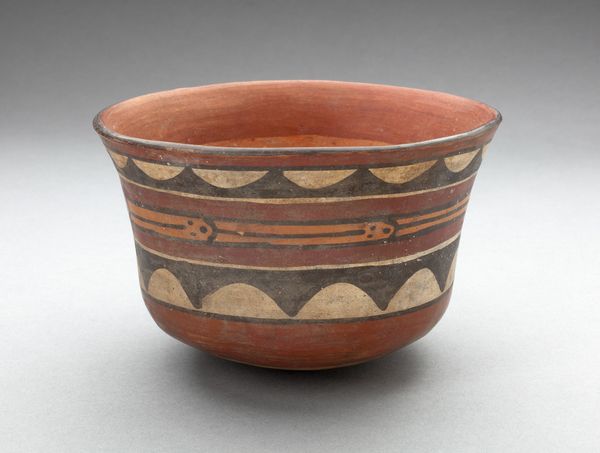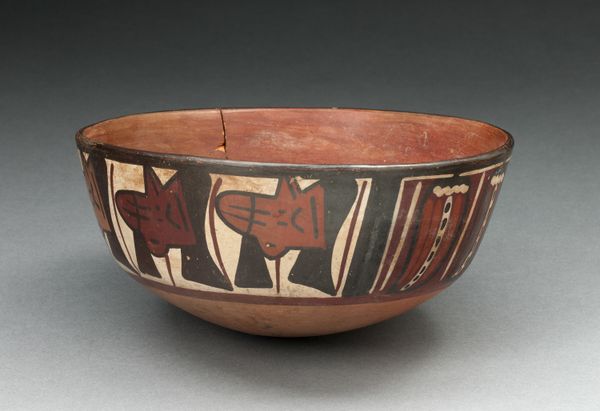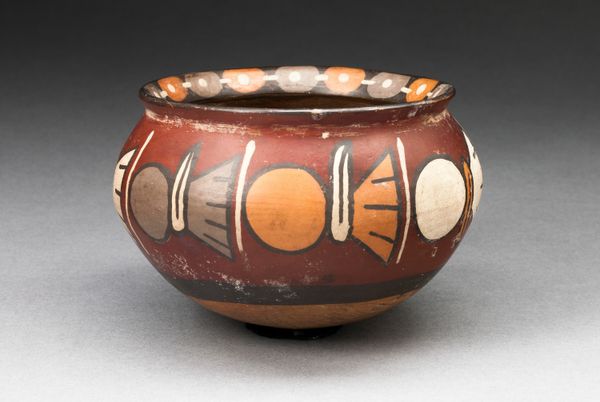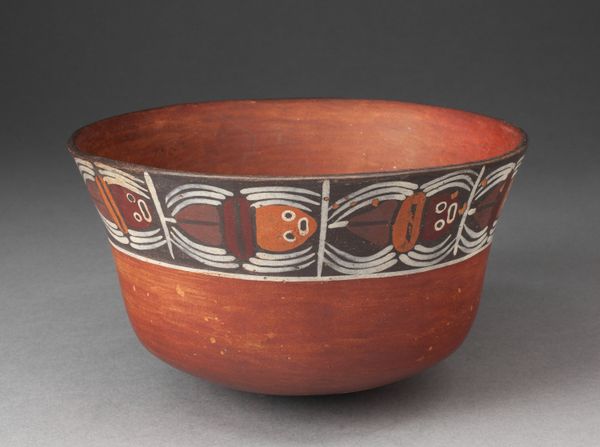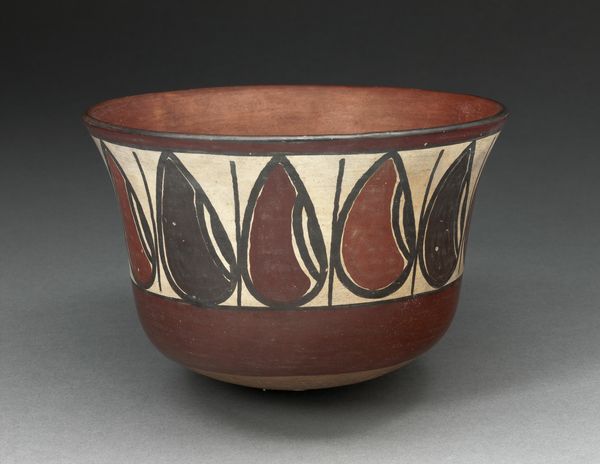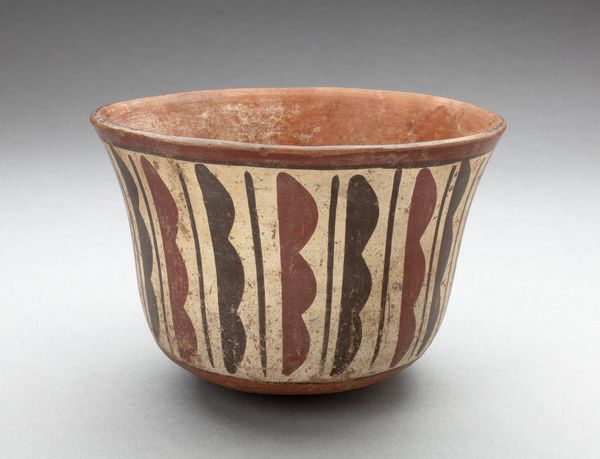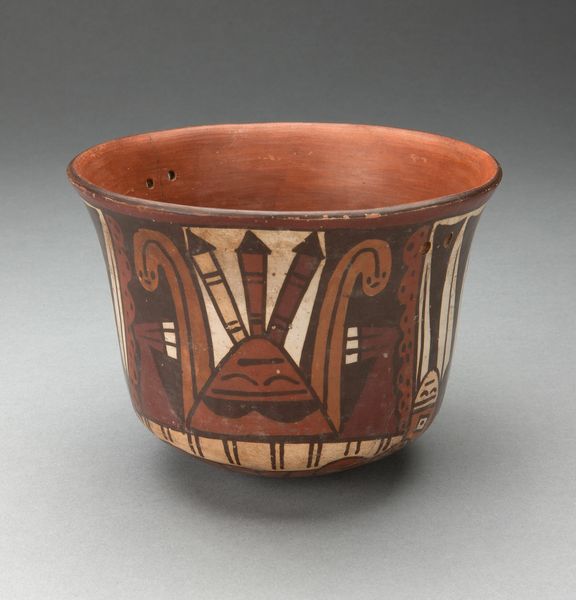
ceramic, earthenware
ceramic
earthenware
geometric
ceramic
indigenous-americas
Dimensions: 26.7 × 49.5 cm (10 1/2 × 19 1/2 in.)
Copyright: Public Domain
Editor: This is a Polychrome Bowl, made of ceramic earthenware around 1880-1900, by an artist from Santo Domingo. It’s at The Art Institute of Chicago. The geometric patterns give it a really modern feel, almost like something you’d see in a Bauhaus design. What catches your eye when you look at it? Curator: Oh, this bowl hums with stories! The thing I find most compelling is its quiet strength. It's earthenware, so beautifully humble, yet those stark geometric shapes… They just command attention, don’t they? Imagine the hands that shaped it, the land it came from. Editor: Definitely! I’m curious about the geometric shapes and their meanings. Were they purely decorative? Curator: Decorative, yes, but also symbolic, very likely. In Indigenous American art, you’ll often find that what seems purely decorative is deeply imbued with cultural meaning, reflecting cosmology, community identity, maybe even personal narratives. What kind of stories might they be telling, do you think? Editor: I'm not sure... family histories maybe? Curator: Or prayers, or even just observations of the natural world interpreted through the artist's unique lens. The negative space, the boldness of the black against the lighter background—it's a conversation, wouldn’t you say? Between tradition and individual expression? It whispers secrets, if you listen closely. Editor: That makes me see it in a whole new light! It’s more than just a pretty bowl; it’s a piece of history and identity. Curator: Exactly! It’s like holding a fragment of a culture in your hands, isn't it? A small but powerful testament to the enduring spirit of creativity. I leave with many memories to savor. Editor: This was awesome. I will remember this! Thank you.
Comments
No comments
Be the first to comment and join the conversation on the ultimate creative platform.
